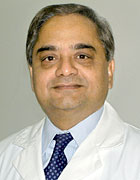Biomechanical evaluation of a low-profile, anchored cervical interbody spacer device at the index level or adjacent to plated fusion Journal Article
Local Library Link: Find It @ Loyola
| Authors: | Balaram, A. K.; Ghanayem, A. J.; O'Leary, P. T.; Voronov, L. I.; Havey, R. M.; Carandang, G; Abjornson, C.; Patwardhan, A. G. |
| Article Title: | Biomechanical evaluation of a low-profile, anchored cervical interbody spacer device at the index level or adjacent to plated fusion |
| Abstract: | STUDY DESIGN: In vitro biomechanical study. OBJECTIVE: To test the hypotheses: (1) an anchored spacer device would decrease motion similarly to a plate-spacer construct, and (2) the anchored spacer would achieve a similar reduction in motion when placed adjacent to a previously fused segment. SUMMARY OF BACKGROUND DATA: An anchored spacer device has been shown to perform similar to the plate-spacer construct in previous biomechanical evaluation. The prevalence of adjacent segment disease after fusion is well established in the literature.There is currently no evidence supporting the use of an anchored interbody spacer device adjacent to a previous fusion. METHODS: Eight human cervical spines (age: 45.1 +/- 13.1 yr) were tested in moment control (+/-1.5 Nm) in flexion-extension, lateral bending, and axial rotation without preload. Flexion-extension was then retested under 150-N preload. Spines were tested intact and after anterior cervical discectomy and fusion (ACDF) at C4-C5 and C6-C7 with either a plate-spacer or anchored spacer construct (randomized). The specimens were tested finally with an ACDF at the floating C5-C6 segment using the anchored spacer device adjacent to the previous fusions. RESULTS: Both the plate-spacer and anchored spacer significantly reduced motion from the intact spine in flexion-extension, lateral bending, and axial rotation (P 0.005). There was no statistically significant difference between the 2 fusion constructs in their abilities to reduce motions (P = 1.0). ACDF using the anchored spacer at the floating C5-C6 level (in between the plate-spacer and anchored spacer constructs) resulted in significant motion reductions in all modes of testing (P 0.05). These motion reductions did not significantly differ from those of a single-level anchored-spacer construct or a single-level plated ACDF. CONCLUSION: The anchored spacer provided significant motion reductions, similar to a plated ACDF, when used as a single-level fusion construct or placed adjacent to a previously plated segment. Level of Evidence: N/A. |
| Journal Title: | Spine |
| Volume: | 39 |
| Issue: | 13 |
| ISSN: | 1528-1159; 0362-2436 |
| Publisher: | Unknown |
| Journal Place: | United States |
| Date Published: | 2014 |
| Start Page: | E763 |
| End Page: | 9 |
| Language: | eng |
| DOI/URL: | |
| Notes: | JID: 7610646; ppublish |
LUC Authors
-
6
Ghanayem -
 26
26Patwardhan
Related LUC Article
